Ruinart’s iconic address – 4 Rue des Crayères – has been transformed with the addition of a pavilion made from stone, glass and wood. Named after its visionary founder, the Nicolas Ruinart Pavilion is designed to enrich the wine tourism experience at the historic house by combining art, nature, and gastronomy.
“The site was reaching saturation point,” explains Frédéric Dufour, managing director of Champagne Ruinart. “The aim with this new visit route and staging is to double our reception capacity. We previously welcomed 25,000 people a year and are hoping to double that over the next two years.”
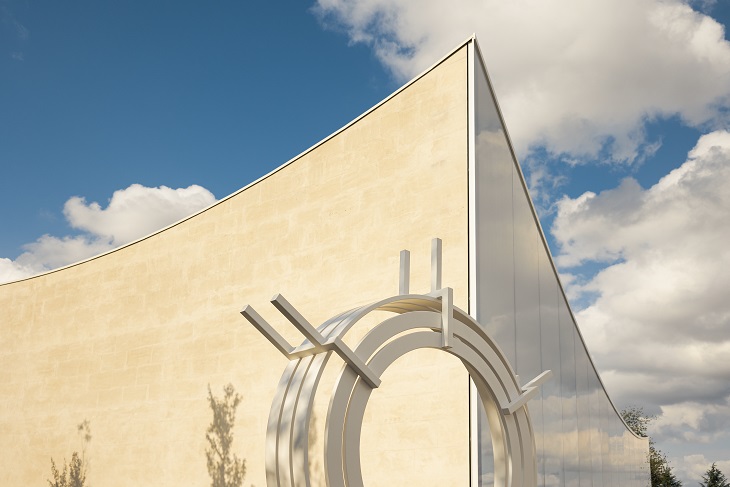
Opposite Ruinart’s beautiful old buildings stands a modern, elegant, streamlined and environmentally-friendly building designed by Japanese architect Sou Fujimoto. One wall is a glass panel which reflects the image of the 100-year-old Ruinart House (main photo).
The other walls are made from local Soissons stone by local stonemason Léon Noël. The walls are topped with a wooden roof.
With natural, bio-sourced materials, rainwater harvesting, a green roof, reinforced insulation and UV blocking glass, the project meets all the criteria for the French High Quality Environmental (HQE) standard in architecture.
The site also produces 80% of its own energy using geothermal energy and solar panels.
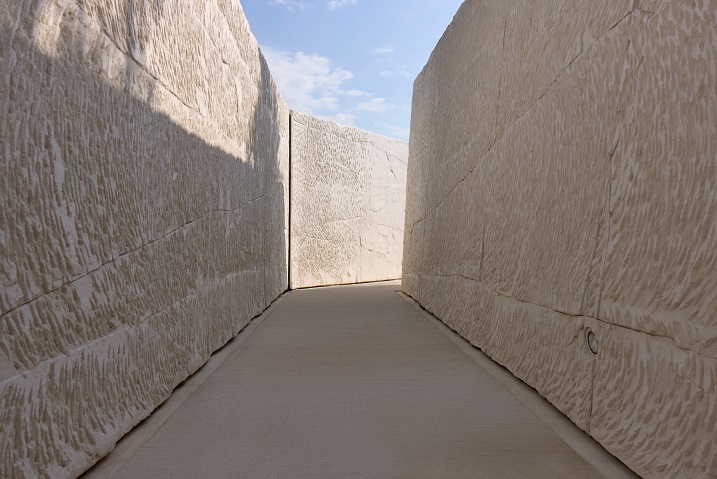
Visitors enter the 1,400sq m building as if taking a hidden path that seems carved out of limestone walls, initially encountering only the dazzling white of chalk, the blue sky and splashes of green from the tops of the trees. The pathway also hints at what’s below – the site’s renowned crayères, underground galleries dug in Roman times and added to UNESCO’s World Heritage List in 2015. First used as a quarry to build the city walls, then as refrigerated cellars by the Ruinart family, these spectacular chalk pits – an 8km maze of underground galleries punctuated by some 20 medieval crayères – are up to 35m deep.
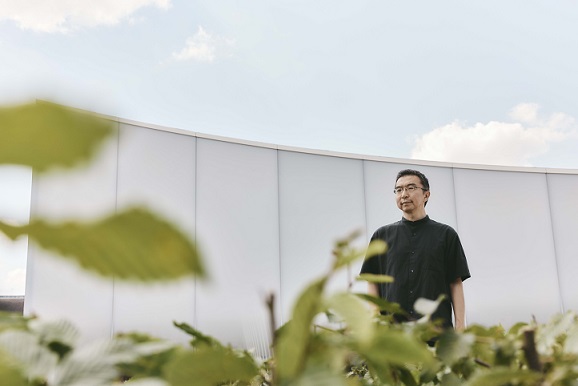
Initially hidden, the edifice and the sleek lines of the asymmetric roof gradually come into view. The curves of the new building contrast with the straight lines of the historic structure. Fujimoto (above) says the rounded shapes were inspired by Champagne bubbles.
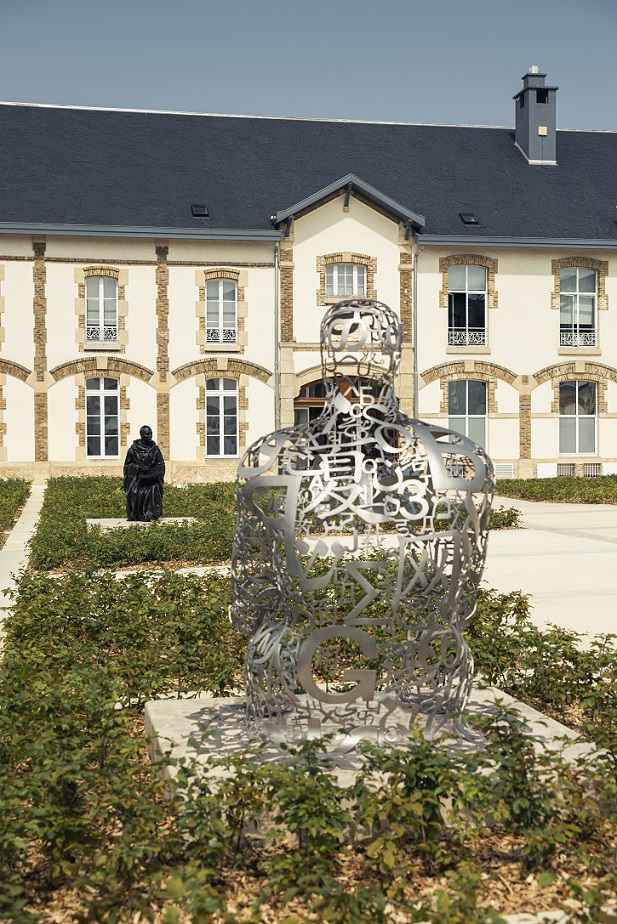
Once inside, visitors find themselves in front of an immense bay window that sets off the view of the courtyard like a picture frame. The gradient of the glass from transparent to subtly opaque again imparts an impression of sparkling Champagne, transforming the view of the historic site into a timeless image.
Destined to become one of the most popular attractions inside the pavilion is the bar serving Ruinart Champagnes. Leaning against the counter under the glass bubbles sculpted by Atelier Barrois or sitting by the cork oaks on the shady terrace, visitors can acquaint themselves with Ruinart cuvées, from the best-known to the rarest Dom Ruinart vintages.
The drinks menu also showcases still wines and original Champagne cocktails imagined by Maison Cravan – like Royal Shiso with Ruinart Blanc de Blancs and green shiso leaves or the classic French 75 featuring Agastache gin, absinthe and R de Ruinart.
The food served here includes sweet and savoury dishes inspired by chef-in-residence Valérie Radou. Simple recipes and careful combinations according to the season and the products available. Vegetable, meat and fish dishes are transformed into velouté, ceviche, tataki and gravelax for lunch or dinner.
In the afternoon, non-stop until the evening, the bar transforms into a dessert counter, ladened with sharing tarts and cakes.
The tableware recalls the house’s roots in the Champagne region. Ceramic designer Inès Waris shaped the plates in her workshop in Avize, on the Côte des Blancs. They are laced with Chardonnay vines. Duo Claire Lange and Lucie Roy from Ilaké-atelier de verre have designed a glass plate that reproduces the Chardonnay leaf, the signature of the maison’s wines, in a subtle play of transparencies.
Also inside this contemporary space are a refrigerated cellar “like a carrousel” housing bottles that are only available on the premises, private lounges, a store, and a secret cellar. This cellar is home to iconic cuvées and historic bottles of Ruinart Champagne, preserved as milestones in the maison’s history.
These include a collection of exceptional vintages and limited-edition cuvées, like Dom Ruinart La Réserve, which have been brought together in the same tasting room for the first time. These rare treasures include five exceptional cuvées that have marked the maison’s recent history. The 1926 Ruinart vintage, the oldest preserved to date, was discovered in 2022 in the cellars of Paul Bocuse's restaurant in Lyon – which the restaurant gifted back to the maison. There is also the first Blanc de Blancs dating to 1941 as well as a 100% Chardonnay coteaux champenois from the mid-20th century, the first modern bottle made with the now iconic shape inherited from the 18th century. You will also find the first Dom Ruinart from 1959, the maison’s prestige cuvée, and L'Exclusive created to mark the year 2000 with a blend of six exceptional vintages in a label-less bottle wrapped in delicate metalwork by Christofle.
Sold for the first time this year, “dégorgement tardif” (late disgorgement) Champagnes are also among the remarkable bottles only available at this address. These vintages – produced in very small quantities in classic bottles and magnums – have been kept beyond the usual ageing period to deliver more complex flavours and aromas.
The interior design is by Gwenaël Nicolas.
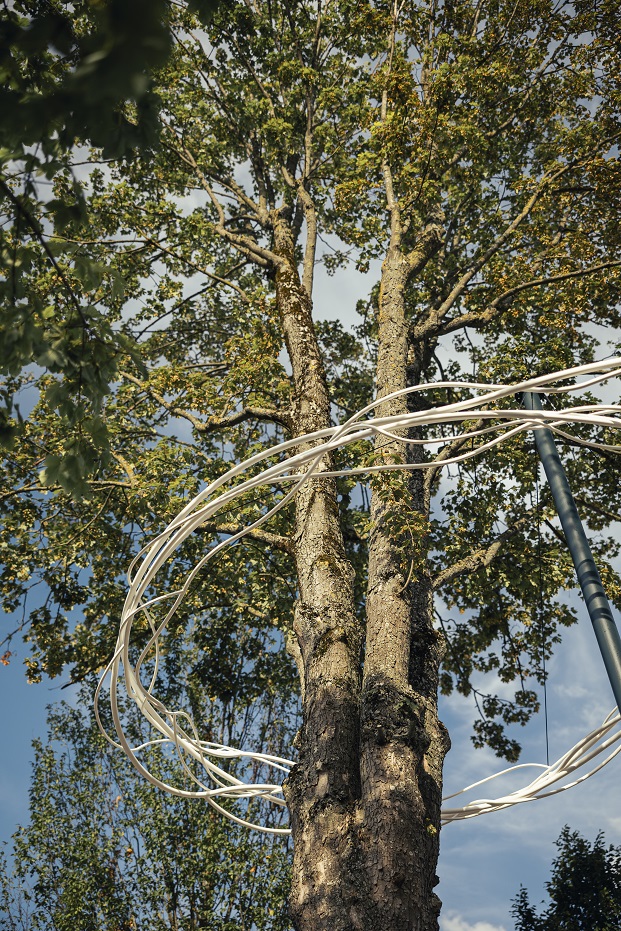

The 5,000sq m grounds, redesigned by landscape gardener Christophe Gautrand, are a sanctuary for local biodiversity and art and are free to enter.
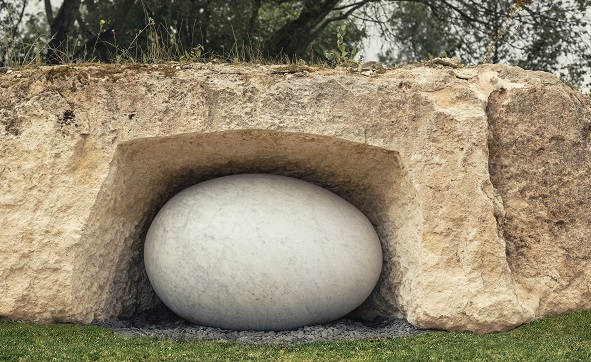
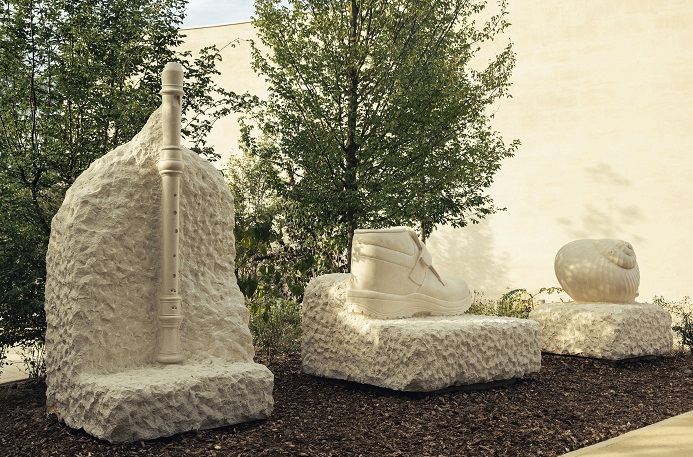
Artwork is on display from the historic chalk pits to the landscaped grounds. In total, more than 100 works by 36 artists are on show – half of Ruinart’s collection. There are about 20 pieces in the gardens. Artworks in the crayères are by Ugo Gattoni, Patricia Urquiola, David Shrigley and Mouawad Laurier.
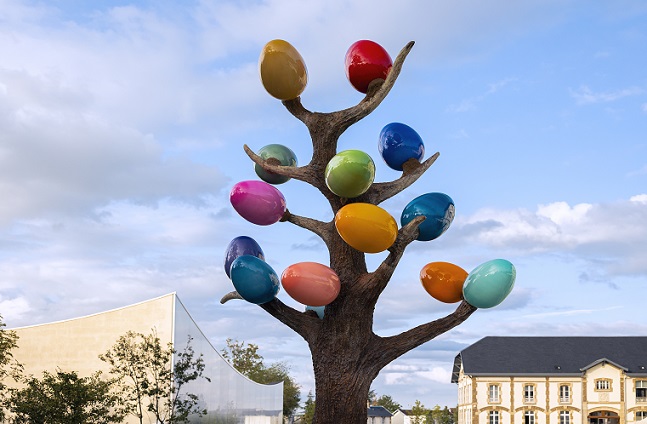
The project, opened earlier this month, took three years to complete. For Ruinart House, which will celebrate its 300th anniversary in 2029, this pavilion marks a new milestone in the development of wine tourism here.
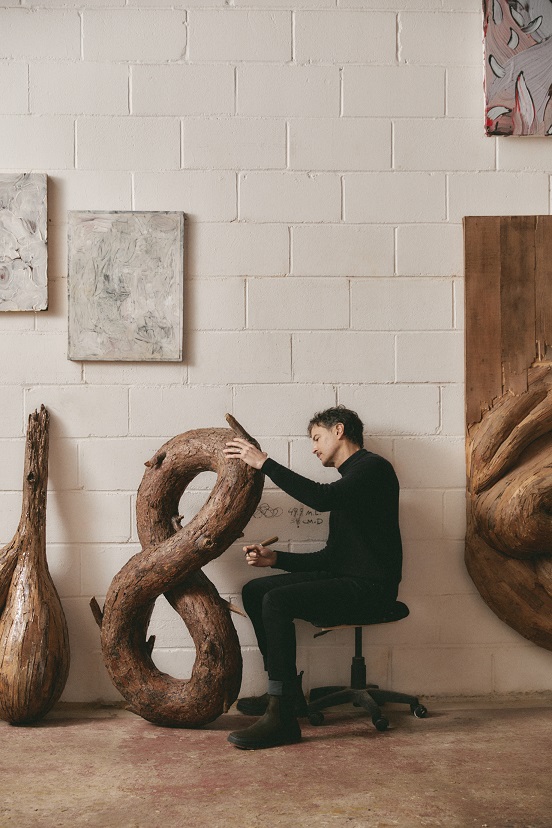
Every detail, from the gardens to the wines, is designed to enhance the art of hospitality around Champagne. These details include:
- Glass bubbles above the pinkish-beige stone bar to create “a Champagne dream”.
- The upholstery of the armchairs, in a palette of delicate greens, is infused with the colours of Chardonnay leaves.
- The contoured shapes of the oak and beech furniture evoke corollas and petals in the intimate alcoves and on the terrace looking onto the garden.
- The walls are infinitely reflected in a mirrored ceiling, linking ground and sky.
- Nestling along the walls set in LED light, bottles of Ruinart Blanc de Blancs form an enchanting backdrop, ready to be picked like ripe fruit.
- A selection of art de vivre objects include wine bottle vases and knives and candleholders made from vine stock.
- In the basement is an intimate cellar that can be reserved by connoisseurs and collectors. The dim orange lighting protects the precious wines from light strike.
- The hedge of hornbeam in the garden is trimmed to varying heights, echoing the gentle slopes of the Champagne hillsides.

 English
English French
French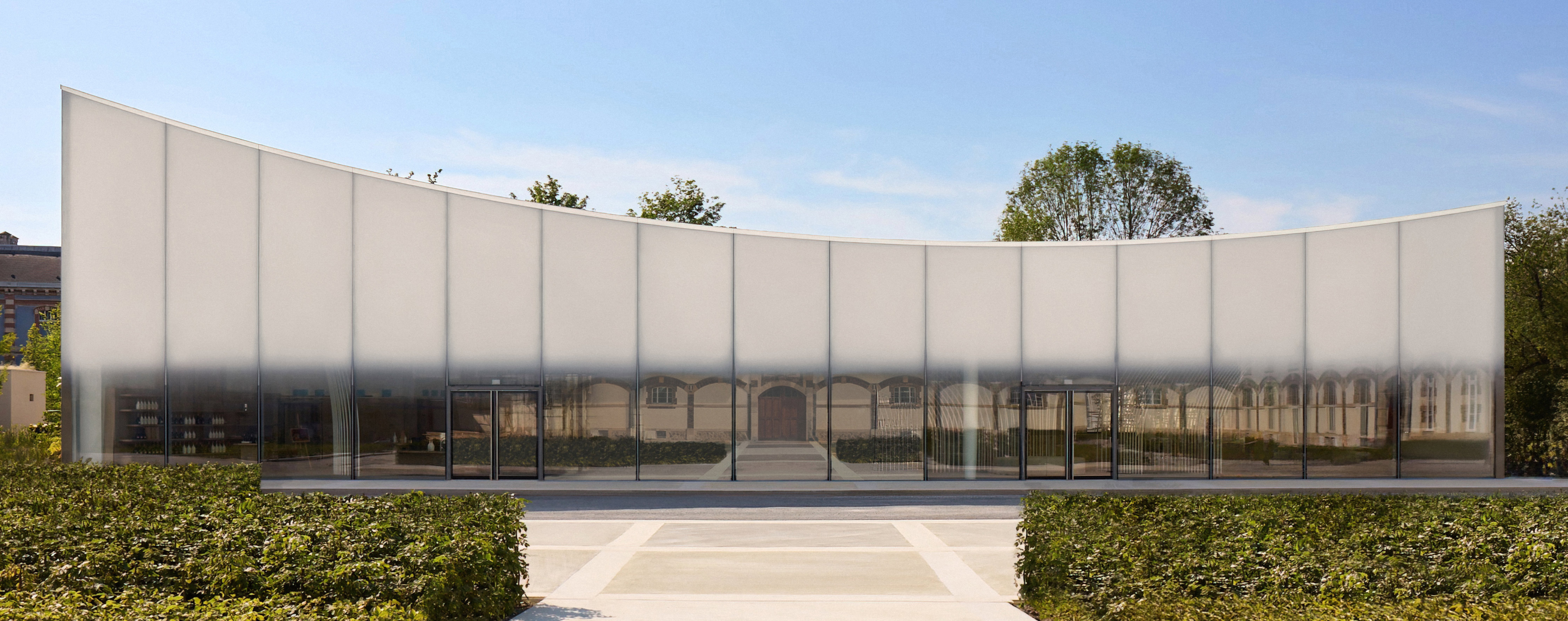







.png)


